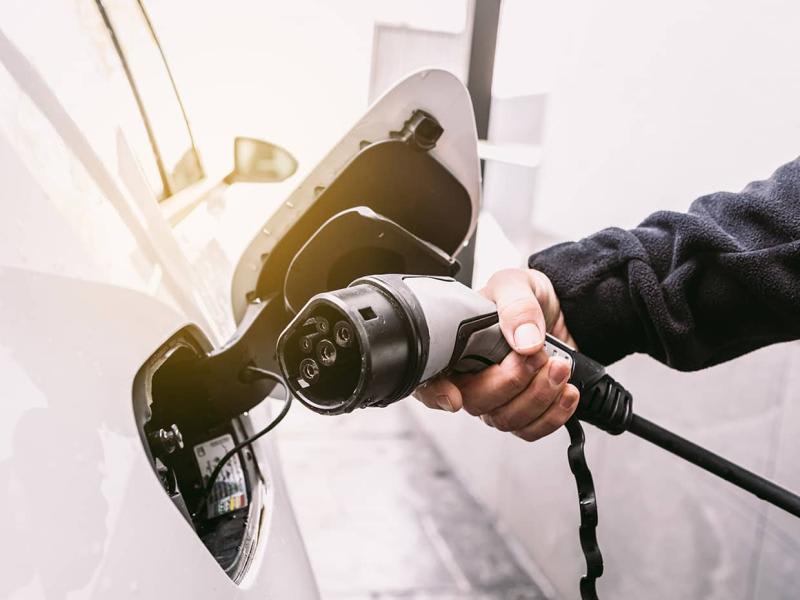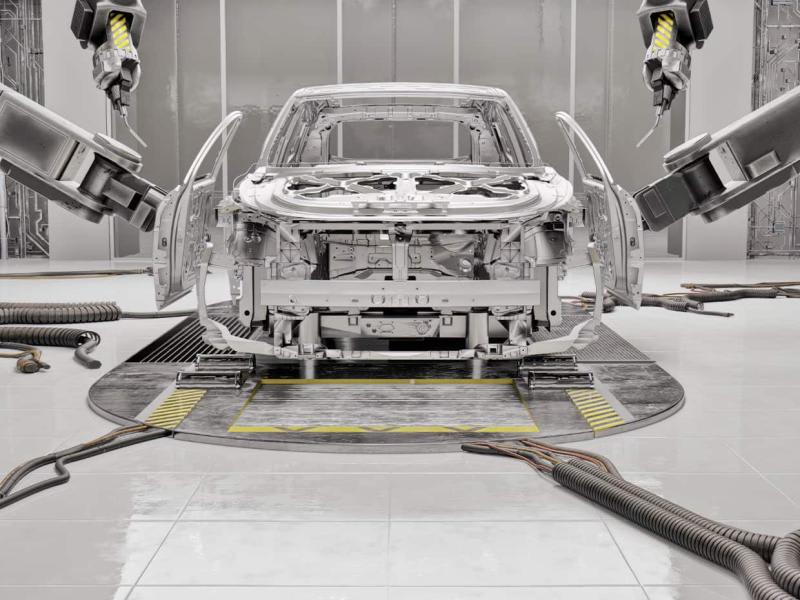Discover our latest 2025 automotive and mobility trends here.
2023 outlook: Rising trends in the automotive industry
The automotive industry is coming out of one of its most challenging periods in history. There has already been plenty of discussion about how we arrived at this point, but what about the future ahead? What will be the trends that will shape the future of the automotive industry, and what is the outlook for the next evolutionary step in automotive manufacturing?
We recently discussed this with several RSM automotive experts, including Mario van den Broek (Partner and Automotive Leader, RSM Netherlands), Richard Bartlett-Rawlings (Partner and Head of Automotive Manufacturing, RSM UK), Jim Ward (Partner and US Automotive Leader, RSM US), and Larry Keyler (Partner and Global Automotive Leader, RSM US). In this article, they share some of their predictions for 2023 and beyond.
Global headwinds make their mark
The industry is continuing to deal with major global disruptions, not just from COVID-19, but from so many other elements of the global economy. Factors such as the tensions in Asia Pacific and the war in Ukraine have created a climate of uncertainty and hesitation. Then, of course, shortages from microchips to labour are affecting almost every touchpoint along the automotive supply chain.
However, one of the most significant global trends continues to be the industry’s focus on the development of electric vehicles (EVs), whether it is improving battery performance or expanding the charging infrastructure. These ambitions are resulting in a significant increase in research and development (R&D) by vehicle manufacturers, who seem to be charging ahead with EV technology despite the many other challenges they currently face.
Autonomous technology takes a backseat
The breakneck pace of development is a sign that manufacturers remain bullish on the future of EVs. In fact, it seems as though every month brings a new advancement that brings us closer to the stated promise of, ‘Vehicles 2.0’. There is one ambition, however, that may have to wait a little longer to be realised.
“The development of autonomous vehicle technology has slowed down somewhat, as manufacturers redirect and refocus on the refinement of the electric vehicle”, says Keyler. “These are certainly being driven by the regulatory landscape, which at the moment is accelerating a path to wide-scale EV adoption. Governments in North America, Europe, and Asia Pacific are all implementing their own initiatives, not to mention the UN, and auto makers are under pressure to deliver”.
Recently, Ford Motors announced that they had put their autonomous technology production on hold. Coming from one of the world’s largest auto manufacturers, this announcement sent a pretty strong signal to the entire industry. “While it was clear within the industry that autonomous vehicle ambitions had waned, the announcement solidified the beliefs of many of its trajectory for the near term”, says Ward.
Labouring through tough times
The staggering number of employees that recently left the workforce and never returned was yet another obstacle impacting the automotive industry. Factories were suddenly scrambling to fill shifts, and original equipment manufacturers (OEMs) were left shorthanded, at a time when the industry was eager to get its machinery back up and running. Adding to this there has also been a shift in skill sets required to serve the change from internal combustion engine (ICE) models to EV.
“As a result of the labour shortage, I think we will continue to see a significant increase in the development of robotics and automation on the supply base as well as other technologies at the OEM level”, says Keyler.
Although the automotive industry has been using robots in their assembly lines for over 50 years, today, automakers are exploring the use of robotics in every aspect of the supply chain. The use of this technology has allowed the automotive industry to remain one of the most automated supply chains globally, and one of the largest users of robots. “This will also drive continued artificial intelligence (AI) and virtual intelligence (VI) tools that are designed to help ensure quality, speed to market, and the OEM’s ability to meet consumer demands”.
ESG jumpstarts a movement
The automotive industry serves as a barometer for the health of the manufacturing sector, in large part due to its reliance on complex global supply chains. With the recent rise of environmental, social, and governance (ESG) initiatives, new pressures are being placed on auto makers to monitor and self-audit.
“Virtually all vehicle manufacturers are active internationally by nature of their production,” states van den Broek, “And with that, they are constantly faced with international challenges and forced to develop a global approach instead of settling for a local approach.”
With the ESG trend shining a light on processes and facilities the world over, the automotive industry is keen to keep its nose clean and keep its investors happy. Technology will likely play a central role in helping car companies monitor their supply chains and adapt to major disruptions.
Sticker shock
One of the trends that seems to be part of the common discussion, especially with rising energy costs, is the concept of accelerated EV parity. The term refers to the cost of owning, operating, and producing an EV being equal to that of an internal combustion engine (ICE) vehicle. At the moment, EVs are much pricier on all fronts than their petrol-powered cousins, but that has not stopped rosier outlooks from the industry.
Recently, Volvo CEO Jim Rowan shared his projection of total EV parity by 2025. While there may be some great headwinds helping drive mass EV production, there are also rising costs and disruptions like the war in the Ukraine that are causing the costs of EVs to climb, possibly out of the average driver’s reach.
“Electric vehicle production continues to move more quickly than most would have ever projected just a few years ago,” says Ward. “But when I speak with people in the automotive industry, they are sceptical about who is going to buy all of these vehicles when they hit the market. With the current average cost of over $65,000, incremental government incentives will likely be required to bear some of that burden and create or maintain economic demand.”
Incentivising new buyers to cross the finishing line
The promise of EV technology is very alluring to the general public, even if the price tags are not. To date, very few of the conversations about the future of electric vehicles seem to include the price point, which is a major barrier to mass scale adoption. With the threat of a global recession looming, the optimism and enthusiasm may be misplaced.
“Tax incentives have been used as a carrot by governments to lure buyers to EV adoption,” says van den Broek. “But due to the success of the use of EV, there is a mixed trend now where we also start to see that some governments are actually considering taxing the use of electric vehicles. ICE vehicle taxes and taxes on fuel drives much-needed revenues for their nations, so they don’t want to give up that income channel and naturally many of them will slowly shift to taxing EVs.”
The reality is that the same recent supply chain disruptions and microchip shortages that hindered the new car market created a boom for the car resale industry. These disruptions forced drivers to hold onto their older vehicles for a longer period of time, out of fear of a lack of supply. Many consumer hesitations are caused by the replacement cost of the new vehicle as well.
“During the recent lockdowns, the average life of a used car went up by a year and a half due to the lack of new vehicles coming into the market” says Bartlett-Rawlings. “If the UK stops selling ICE vehicles by 2030, the used car market will slowly dry up if total new car volumes cannot be maintained. When people can’t buy an electric car and there are insufficient reliable used ICE cars, they’re simply going to be pushed out of car ownership.’
Concerns over obsolescence
Next to a home, a vehicle is probably the largest purchase a consumer can make. Even base model vehicles cost tens of thousands, putting pressure on buyers to get the most out of their investment. The double-edged sword of EV production is that the same technology that will be used to lure in new buyers also goes out of date very quickly.
“If I buy an EV today, in a few months I may see that Toyota is releasing a new solid-state battery that suddenly increases the range of a car twofold,” says Bartlett-Rawlings. “Now the car I own is outdated and worth much less than it was the day before, which discourages customers from moving to EVs in the fear of losing out days or months later.”
Of course, context is key, and not all geographic regions are built the same. In the Netherlands, for instance, EV adoption has been huge, thanks to government incentives. “For years, we were one of the go-to places for EVs,” says van den Broek. “We actually saw several Asian manufacturers launch their vehicles in this region because of incentivisation, resulting in huge spikes in sales for the EV models available here. Today, waiting periods are in the vicinity of eight months, so the strategy seems to have successfully encouraged large-scale adoption over a short period of time.”
The price of progress
A recent study by Continental Tyres revealed that many car customers are worried that all of this new technology is going to price them out of the new car market. Those numbers raise a dilemma for automakers, as cost has always been a major touchpoint in the customer purchase journey.
On the other hand, rising inflation is generating some interesting side effects, some of which may result in major transitions within the industry. The current energy crisis is starting to make vehicles produced in Germany, the UK, and other parts of Europe quite expensive compared to those from East Asia and the US, where shale gas is helping to keep prices subdued. That has eyes shifting to other parts of the globe.
“There are a lot of manufacturers considering moving production out of the EU and UK,” says Bartlett-Rawlings. “Far East brands such as Kia and Hyundai, who were rather niche brands in the UK prior to COVID-19, are starting to increase market share. In the end, this is good for the industry, which is always in need of a shake-up and responds well to challenges through innovation.”
The evolution of vehicle safety
It often goes unnoticed, but vehicle safety has been developing at a steady pace since the 90s. Today’s vehicles are already quite sophisticated, with features such as predictive braking systems, cameras, lane departure warnings, and electronic stability control. The future holds more promising advances, many of which will be inspired by the consumers themselves.
“Today, customers in the US place a significant emphasis on vehicle safety ratings when deciding which vehicle to buy,” says Ward. “These advanced features will not just be for luxury models; they’re going to become standard. This is an important trend that we will have to monitor, because it will put pressure on the OEMs and their suppliers to be able to deliver on all of the parts and systems they will require.”
In the EU, manufacturers are starting to borrow technology that would have been used for autonomous driving and applying it to their own offerings. Connected vehicles can warn each other that they are in close proximity. The challenge for the industry will be getting everyone on the same page.
“It’s a little bit like the variety of charging cables for mobile phones,” says Bartlett-Rawlings. “If every manufacturer decides to go down their own path, none of the cars will talk to each other. So, I think they’re trying to get to a point where there’s a consensus on how that technology will work and how the vehicles will interact with each other.”
Connectivity: A two-way street
Modern vehicles require constant connectivity, and as we have learned from our smartphones, that kind of access comes with a price. Cars of the future will be collecting, analysing, and sharing more data from their drivers than ever before, and this is raising concerns over privacy and cybersecurity.
“At the moment automotive connectivity has shown itself to lack the required security that we see in other ‘smart’ devices”, says Bartlett-Rawlings. “A recent investigation by UK consumer website, Which, found that vehicle systems could be accessed in about fifteen seconds. That obviously has dangerous implications if a hacker decides to remote access a vehicle and access or remove safety critical devices.”
As data becomes more intensive and personalised, through automation and vehicle interconnectivity, the data risks to consumers increase. Everything from driver location to contact details will be stored in a server somewhere, and like all technology, servers are vulnerable to attack. These details could be used by rogue parties to either gain access to the vehicle or gain knowledge on individuals that could be sold or used for multiple unwelcome purposes. This presents a conundrum for automotive makers: they can either spend a lot of money solving the security issues around vehicle technology, or they can simply shelve these more advanced autonomous projects until they clear the EV hurdle first. For most producers, the answer is simple.
“If you hold data on people that is personal and identifies their locations for example, you have to take proper responsibility for it”, says Bartlett-Rawlings. “Until OEMs can get the basics right in their current fleets, autonomous vehicles may have to go on the back burner. Eventually, the onus will be on OEMs to get driver data secured and make sure their vehicles meet at least the basic security requirements.”
Roadworks ahead
The future of mobility seems optimistic, however there will be challenges. The continued resilience of the industry will be critical and manufacturers will need to simultaneously innovate for the future while also reacting and adapting to present-day challenges. The rate of technological developments will challenge the industry to fully leverage momentum and continue to serve its consumers and customers. We are seeing history repeat itself once again in an industry that is constantly reinventing itself and looking towards the future, with exciting and perhaps more purpose-driven times ahead.








